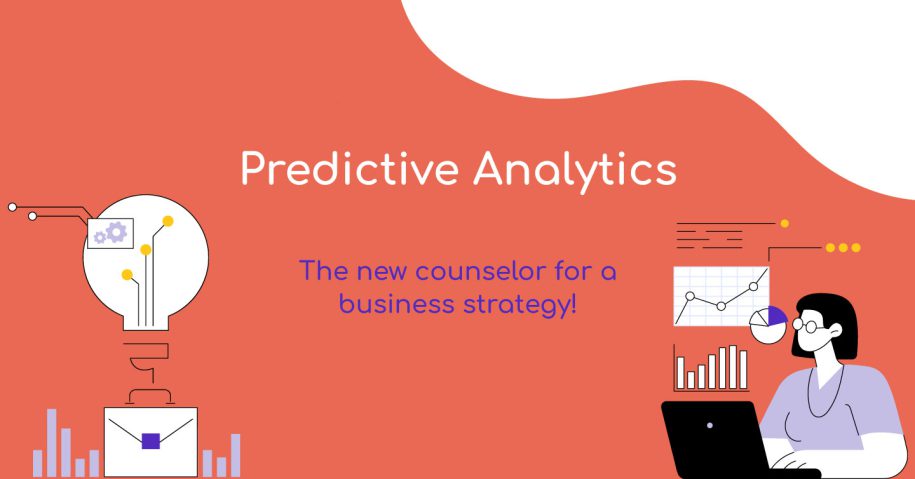Predictive Data Analytics is a process of using data to predict future outcomes. It essentially answers the question “What could happen next?” Predictive Analytics uses statistical models, data analysis, machine learning and AI to identify patterns that attempt to predict future behavior.
In this way, organizations can use historical and current data to accurately predict trends and behaviors that will occur in the next seconds, days, even years! By leveraging these predictions, companies can optimize their strategy and make important business decisions.
Let’s dive into the world of Predictive Analytics!
In this article we will see:
- How does Predictive Analytics work?
- Predictive Data Analytics techniques
- Where can Predictive Data Analytics apply?
- Examples of Predictive Analytics applications
How does Predictive Analytics work?
Data scientists use predictive models to identify correlations between different elements in selected data sets. Upon completion of data collection, a statistical model is formed, trained, and modified to generate predictions.
What are the 5 steps to building a Predictive Data Analytics model?
1. Problem definition
First of all, you need to define the problem you want to solve with the use of Predictive Data Analytics. For example, can a predictive analytics model detect fraud or determine a retail store’s optimal inventory levels in high season? A specific and understandable problem to solve will help you determine the appropriate Predictive Analytics method to use.
2. Data acquisition and organization
An organization may have decades of data to analyze or a constant influx of data resulting from customer interaction. Before developing Predictive Data Analytics models, data flows must be defined, and then datasets can be organized into a data warehouse such as BigQuery.
3. Data pre-processing
To prepare data for predictive analytics models, it must be “cleaned” to remove anomalies, missing data points, or outliers—anything that could be the result of input or measurement errors.
4. Development of forecasting models
Data scientists have a variety of tools and techniques for developing Predictive Data Analytics models, depending on the problem to be solved and the type of data set. Machine learning, regression models, and decision trees are some of the most common types of Predictive Analytics models.
5. Validation and development of results
The final stage of developing a Predictive Data Analytics model involves checking the accuracy of the model and adjusting it accordingly. Once acceptable results are achieved, the models can then be available to stakeholders via a website, app or data dashboard.
Predictive Data Analytics techniques
Broadly speaking, there are two types of Predictive Analytics models: classification models and regression models.
Classification models attempt to assign data objects to one of several predefined categories. For example, if a retailer has a lot of data on different types of customers, he can use some to predict which customers will be most receptive to emails.
Regression models try to predict continuous data, such as how much revenue a customer might generate during their interaction with the company.
Predictive Data Analytics is typically performed with 3 main types of techniques:
Regression analysis
Regression is a statistical analysis technique that calculates relationships between variables. It is useful for identifying patterns in large data sets and the correlation between inputs.
Regression is used to determine how one or more independent variables affect another, such as how a price increase will affect the sale of a product.
Decision trees
Decision trees are classification models that place data into different categories based on discrete variables. The method is best used to understand a person’s decisions.
The model resembles a tree, with each branch representing a possible choice, while each leaf represents the outcome of the decision. Decision trees are usually very easy to understand and work well when a data set has many missing variables.
Neural networks
Neural networks are machine learning methods that are useful in predictive analysis when modelling fairly complex relationships. Essentially, these are power generation pattern recognition engines.
Neural networks are used to identify nonlinear relationships in data sets, especially when there is no known mathematical formula for data analysis. Neural networks can be used to validate the results of regression models and decision trees.
Where can Predictive Analytics apply?
Predictive Data Analytics can practically be used to streamline operations, enhance revenue and reduce risk for almost any business or industry. Banks, retail, public services, healthcare providers, and utilities are some types of organizations that use Predictive Data Analytics.
How can an organization incorporate predictive analytics into its operations?
Fraud detection
Predictive Analytics examines the activity on a company’s network in real-time to detect anomalies that indicate fraud or other vulnerabilities, helping to keep the organization’s security.
Market forecasting
Companies can take actions such as retargeting potential buyers with online ads, through data that predicts the highest conversion rates.
Risk reduction
Credit scores, insurance claims and debt collections use Predictive Analytics to assess and predict the likelihood of future defaults.
Functional improvement
Companies use predictive analytics models to forecast inventory, manage resources and operate efficiently.
Customer categorization
By segmenting customers into specific groups, marketers can use Predictive Analytics and tailor their content to each audience.
Maintenance forecast
Organizations can use data analytics to predict when routine maintenance will be needed on their equipment and schedule it before a more serious problem occurs.
Examples of Predictive Data Analytics applications
Microsoft Azure Machine Learning: Azure Machine Learning is a cloud-based platform that provides Predictive Data Analytics and machine learning services. It helps data scientists and developers create, develop and manage high-quality models easily and quickly using open source interoperability and built-in tools.
Google Analytics: Google Analytics uses Predictive Analytics and data analysis to help marketers track website traffic and predict user behavior and conversion rates. This way, they can adjust their strategy to more effective and targeted tactics.
Salesforce Einstein Analytics: Salesforce Einstein Analytics uses machine learning to predict future sales opportunities and trends, helping sales teams prioritize leads.
Amazon Forecast: Amazon Forecast is a machine learning service that provides highly accurate weather forecasts. It is used by businesses to forecast demand, sales and other metrics that have time parameters.
Meta Ads Manager: Meta Ads Manager uses Predictive Data Analytics to help Instagram and Facebook advertisers predict the reach of their ads and create campaigns that will target the desired audience.
Stay one step ahead with the most modern tools!
Do you want to plan your next steps and know in advance the results of your actions? Through modern tools using Predictive Data Analytics and AI, you can take advantage of useful data to design the most effective strategy.
If you want to lead your business into the new era, contact us! By implementing the right methods you will streamline and automate your operations, taking off your sales and CX!
Take the first step in the Digital Transformation of your business with NUS Solutions!





…